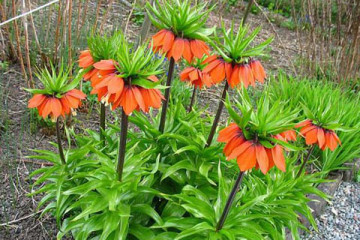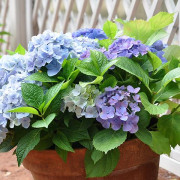When to dig tulips
Content:
Tulips are among the first to bloom in the garden. They can be of incredible colors and shapes. These beautiful, albeit very familiar flowers will serve as a decoration of any garden. Tulips are planted both independently and in compositions, for example, with daffodils. In any case, the bulbs need to be cared for in order to enjoy their beauty again later.
When to dig tulips
Large beautiful flowers will delight if their bulbs are dug out after flowering. When to dig up tulip bulbs, their leaves will tell you.
Dig up the planting material when the flowers have faded, but do not wait for the foliage to completely wilted, then it will be difficult to understand their location.
What to do when tulips have faded
If the flowers begin to fade, their foliage turns yellow after a while. The tulips have faded, what to do with them next, the aerial part of the plant will tell you. The leaves should be almost completely yellow, but not brittle, flexible enough to adhere firmly to the bulbs.
After digging up, the tulips must be prepared and stored in a suitable place, such as in a house or basement. If you perform all the actions on time and correctly, then the planting material will be able to survive until autumn and will delight you with beautiful flowering in the future.
Tulips need care after flowering outdoors. It is best to dig them up on a warm, clear day. It is best to use a pitchfork or a narrow shovel in your work. In the southern regions of Russia, the procedure can be performed already in early June, in the northern regions and in the middle lane - in early July.
Do not do this too early, they will be poorly stored, and the next year the plant will become less resistant to diseases, the flowers will grind it. If it is too late to complete this procedure, the babies will separate from the mother's bulb and may be damaged or even lost in the soil.
Why dig up flowers in the summer
If the bulbs are left in the soil over the summer, they can suffer from excessive heat or heavy rainfall. This will entail irreversible consequences: tulips can go deeper into the ground, get sick or stop blooming altogether.
How to prepare bulbs for storage
When digging tulips, keep the tools perpendicular to the ground, otherwise there is a risk of damage to the planting material. They must be removed from the ground together with a lump of earth, after which it must be shaken off.
Large children should be separated from the bulb, while leaving the small ones so that they grow up even more. After that, the tulips should be laid out in boxes (preferably wooden ones):
- immediately take it outside and ventilate, if the weather is rainy, then leave to dry indoors;
- remove excess dirt and husks;
- rinse them with a solution of salt (1 liter of water and 1 tbsp. l. salt);
- lay in layers in boxes, spreading each row with a newspaper.
Store the bulbs in a dark room, a dry basement is perfect. Good ventilation and disinfection of the room will help. For storage, the temperature should be maintained at a level of up to 25 ° C, humidity - no more than 60%. You can protect the bulbs from mold and rot by airing the selected room twice a week for 3 hours.
Closer to autumn, the temperature should be gradually reduced to 16 ° C, while the airing time is reduced. In such conditions, the rudiments of foliage and buds are formed. The bulbs should also be checked regularly for damage and decay. Such specimens should be immediately removed from the rest.
Digging work procedure
Choosing a dry, warm day, you can dig up the tulips. When working, it is better to focus on dry foliage and carefully remove the bulbs along with a clod of earth.
If it rained, then you should wait a few days until the earth dries out, only then dig. Having taken the bulbs out of the ground, they must be left for a couple of hours outside in the sun so that the soil on the roots becomes completely dry. After that, they are cleaned and removed to a prepared place.
Caring for tulips after flowering
Once the plants have bloomed, some maintenance will be required, even before the bulbs need to be dug up. Many questions arise about whether to prune the leaves and how to water afterwards.
When to prune tulips
By the end of flowering, watering and fertilization should be minimized. But premature pruning will be dangerous and can also lead to a complete lack of flowering in tulips.
You need to cut off completely wilted leaves. As a rule, this procedure is carried out just before the bulbs are scooped up. Plants must receive the maximum amount of nutrients and ripen; in tulips, this process occurs through green leaves.
Another important point is that after pruning, the locations of the bulbs should be marked so that they do not damage them later and know exactly where they are. This whole procedure is a rather lengthy process, which involves the gradual cutting of the aerial part of the flowers, as soon as they are ready.
Do I need to pick a flower
Florists claim that the peduncle should be cut a week after flowering. This will help keep the plant vigorous, conserve more nutrients and form stronger, healthier seeds.
If the flower is cut for a bouquet, then it is worth cutting it with a couple of leaves. In other cases, the foliage is trimmed only after drying.
Timing of digging tulip bulbs
Flowering times vary depending on the region and variety. Therefore, it is possible to determine exactly when to get the bulbs out of the ground only by the time when the flowering ended. This process begins no earlier than a month after flowering. Do not keep tulip bulbs in the ground for longer than 1.5 months after they are fully ripe.
The cultivation of tulips in Belarus and the Moscow region is not much different, in the Urals and Siberia the timing will be completely different. In the Kuban, the period will be earlier than in other regions.
How and how much to store planting material
Store the bulbs in a special place where the required temperature, humidity and low light must be maintained.The room should be well ventilated or regularly ventilated.
For about 2 months, the temperature should be maintained no higher than 25 ° C, after which it should be gradually reduced to 15 degrees. This care helps to form a flower bud in the tulip bulb.
When and how to plant tulips in autumn
October is suitable for planting in the ground, in colder regions this should be done in September. It is important for the bulbs to take root during the warm period, this will help them to take root, which will ensure a warm winter and bright flowering in spring.
The soil temperature should be no higher than 10 ° C. For later planting, cover the tulips to allow time for rooting. If the ground is not cold enough, then rooting will take place more slowly, and pests and diseases can also affect the bulb.
For tulips, you should choose sunny, windless areas; light sandy soil is required. To improve the condition of the soil, compost or peat can be added. Drainage should be placed in each hole at the bottom, the soil should be dug at least 30 cm deep to saturate it with oxygen.
The planting process is as follows:
- make furrows 15 cm deep;
- spill them with water;
- then it is worth feeding the plant;
- lay out the bulbs at a distance of 10 cm;
- sprinkle with ash and sand;
- then sprinkle with soil.
It is best to plant tulips in the same place only after 4 years.
Sometimes an urgent transplant is required in the spring. For example, if you need to plant other flowers on this place. You can transplant tulips, but it is advisable to do this before flowering. Caring for tulips is simple, the main thing is to do all the actions correctly.
Video





















